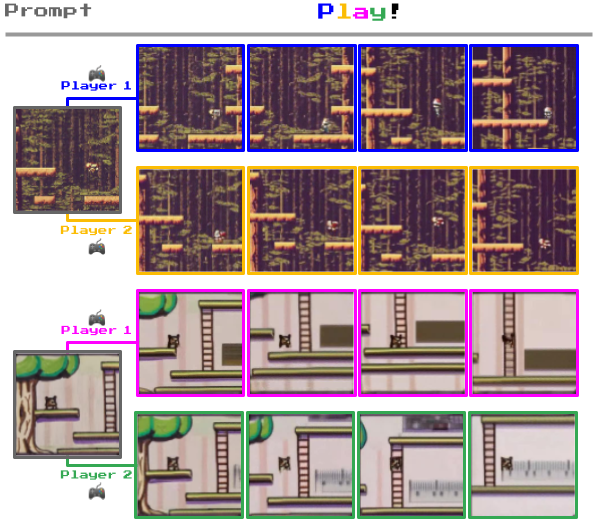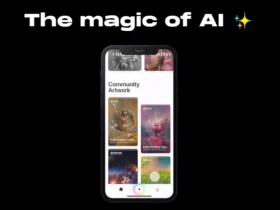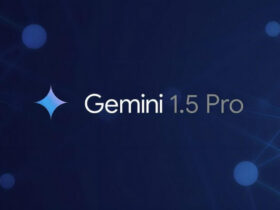For years, the gaming industry seemed like an unstoppable juggernaut, with revenues rising to stratospheric heights on the backs of ever-more-immersive titles and the explosion of mobile gaming.
However, as we enter the mid-2020s, there are growing signs that the industry is reaching a plateau.
After the pandemic-fueled boom of 2020 and 2021, global gaming revenues dipped in 2022. That contraction gave way to tepid growth of just 0.5% in 2023, bringing the worldwide gaming market to around $184 billion, according to data from Newzoo.
While still an impressive figure, it’s a far cry from the double-digit percentage growth the industry had come to expect.
The slowdown is even more pronounced in mature markets like North America and Europe, where key sectors such as console and mobile gaming are approaching saturation.
Mobile gaming revenue, once propelling the industry’s continued growth, actually declined in 2022 and is only now beginning to stabilize.
Revenue stagnation is only part of the story, however. Even as growth slows, the cost of developing top-tier AAA games continues to soar.
Budgets for marquee franchises like Call of Duty and Grand Theft Auto now routinely exceed $300 million. Some titles are nearing combined development and marketing costs of $660 million, a staggering sum that would have been unthinkable a decade ago.
These ballooning budgets are forcing studios to play it safe, leaning heavily on established franchises and proven formulas instead of taking risks. Innovation is taking a backseat to iteration.
There’s also evidence that people aren’t enjoying games as much as they once did, with sentiment to releases dropping from 3.4/5 in 2014 to 2.9/5 in 2021.
Even the buzz of the latest CoD and FIFA games seems to be waning. Although we’ve witnessed historic releases in recent times, like Elden Ring, for example, it took some five years to create at a cost of over $200 million. It’s a once-in-a-generation title rather than the best release in any given year, as would have likely been the case in the pre-2020s.
The human toll of this financial squeeze is also becoming tougher to ignore. Layoffs are picking up pace, with over 10,500 game developers losing their jobs across over 30 studios in 2023 alone.
Simultaneously, the industry is grappling with a rising tide of labor activism as workers push back against the notorious “crunch culture” that has long plagued game development.
The indie incursion
Amid tensions in AAA studios, indie developers are making a greater impact in the industry – a powerful counterpoint to mainstream game development.
In 2024, indie games are claiming five of the top ten spots on Steam’s highest-grossing list. Titles like Palworld ($6.75m budget, 25 million units sold) and Enshrouded are resonating with players, showcasing the potential for indie games to achieve commercial success on par with AAA releases.
The surging popularity of indie games is part of a larger trend, with the market share of indie games on Steam growing from 25% in 2018 to 43% in 2024.
Even in years with highly anticipated AAA launches, like 2023’s Baldur’s Gate 3 and Spider-Man 2, indie revenue has held steady, indicating a robust and growing audience for these titles.
The rise of indie games reflects a growing appetite among some players for novel experiences and creative risks.
While AAA development often focuses on established franchises and proven formulas, indie developers push boundaries and experiment with new ideas.
Meanwhile, tools like Unity and Unreal Engine have made high-quality game development more accessible, while digital marketplaces like Steam offer an excellent platform to find audiences. Many indie games find success through viral social media marketing, outmaneuvering the traditional marketing strategies of big studios.
Building on this momentum, AI is poised to further upset the power balance in the gaming industry and redefine the very essence of creativity in game development.
By automating and streamlining the design and creation process, AI will further level the playing field, allowing small teams and even individuals with no technical expertise to create competitive gaming experiences.
The AI paradigm shift
AI’s potential to disrupt gaming has been discussed for decades, but the prospect is no longer just theoretical.
Recent breakthroughs, such as Google’s GameNGen and DeepMind‘s Genie, provide a glimpse into a future where AI drives game design.
GameNGen can generate entirely playable levels of classic games like DOOM in real-time, while Genie can conjure up interactive 2D environments from simple images or text prompts.
These breakthroughs are part of a longer trend of AI-driven innovation in gaming, though the industry is still very young.
The journey began with early milestones like IBM’s Deep Blue, which famously defeated world chess champion Garry Kasparov in 1997. Deep Blue’s victory was a landmark moment that demonstrated the potential for AI to excel in rule-based, strategic challenges.
Fast forward to 2016, and we saw another significant leap with Google DeepMind’s AlphaGo. This AI system mastered the ancient Chinese game of Go, known for its immense complexity and reliance on intuition. By defeating world champion Lee Sedol 4-1, AlphaGo showed that AI could tackle domains that were once thought to be the exclusive domain of human intelligence.
It was in 2018 that researchers David Ha & Jürgen Schmidhuber published World Models, demonstrating how an AI could learn to play video games by building an internal model of the game world.
A year later, DeepMind‘s AlphaStar showcased the power of reinforcement learning by mastering the complex strategy game StarCraft II, even competing against top human players.
Representing the cutting-edge of this field today, GameNGen was trained on actual DOOM gameplay footage, allowing it to internalize the game’s mechanics, level design, and aesthetics.
It then uses this knowledge to generate novel levels on the fly, complete with coherent layouts and gameplay flow.
Conversely, Genie uses a foundation model to generate interactive environments from more freeform inputs like sketches or descriptions. By training on a diverse range of game genres and visual styles, Genie can adapt to create content across a broad spectrum of aesthetics.

Under the hood, these AI systems are powered by deep neural networks, which are becoming game engines unto themselves, capable of generating complete, playable experiences from scratch.
Essentially, the game world is created inside the AI system itself, not through traditional programming techniques but by a deep neural network that has learned game design rules, patterns, and structures. Because the game world is generated by a neural network, it has the potential to be far more dynamic and responsive than traditional game environments.
The same network that generates the world itself could also be used to simulate NPC behaviors, adjust difficulty on the fly, or even reshape the environment in real-time based on player actions.
With AI handling the heavy lifting of world-building and level design, the optimistic narrative is that developers will be free to focus on higher-level creative decisions, such as creating art, concepts, and storylines.
While jobs would be placed at risk, AI will surely be the major level-up the gaming industry is looking for.
Empowering players, disrupting business models
The real revolution will kickstart when these AI tools are placed directly in the hands of players.
Imagine a world where gamers can conjure up titles with a few simple prompts, then jump in and start playing instantly.
Want to mash-up the neon-soaked cityscape of Cyberpunk 2077 with the frenetic combat of DOOM Eternal? Just describe it to the AI and watch your idea come to life.
This is a vision for the next couple of decades, but in the nearer term, AI will make it possible for players to create and customize simpler games according to their unique preferences.
For example, a player could use an AI tool to create a platformer game where they define the main character’s abilities, the types of enemies they face, and the style of the environments they traverse. Or they could create a puzzle game where they set the difficulty curve, the visual theme, and even the types of puzzles encountered.
Instead of being limited to the creative direction of professional game designers, the industry could be shaped by the collective creative input of millions of players.
Moreover, as AI game creation tools become more sophisticated, they could enable a new generation of “prosumer” game creators – players who blur the line between consumer and creator.
This bottom-up, democratized approach to game creation could fundamentally shift the power dynamics within the gaming industry. Instead of a top-down model where a handful of large studios dictate the kind of games that get made, we could see the emergence of a more diverse, player-centric gaming ecosystem.
Platforms that provide AI tools for creation and curation will facilitate the technical side, taking a cut of user-generated content sales or charging for access to premium features.
Of course, realizing this vision for the industry won’t be without immense challenges. Issues of content moderation, intellectual property rights, job displacement, and revenue sharing will all need to be confronted.
However, the wheels are in motion. As the technology continues to evolve, we can expect to see more and more examples of AI not just assisting in game development, but fundamentally reshaping what games can be.












